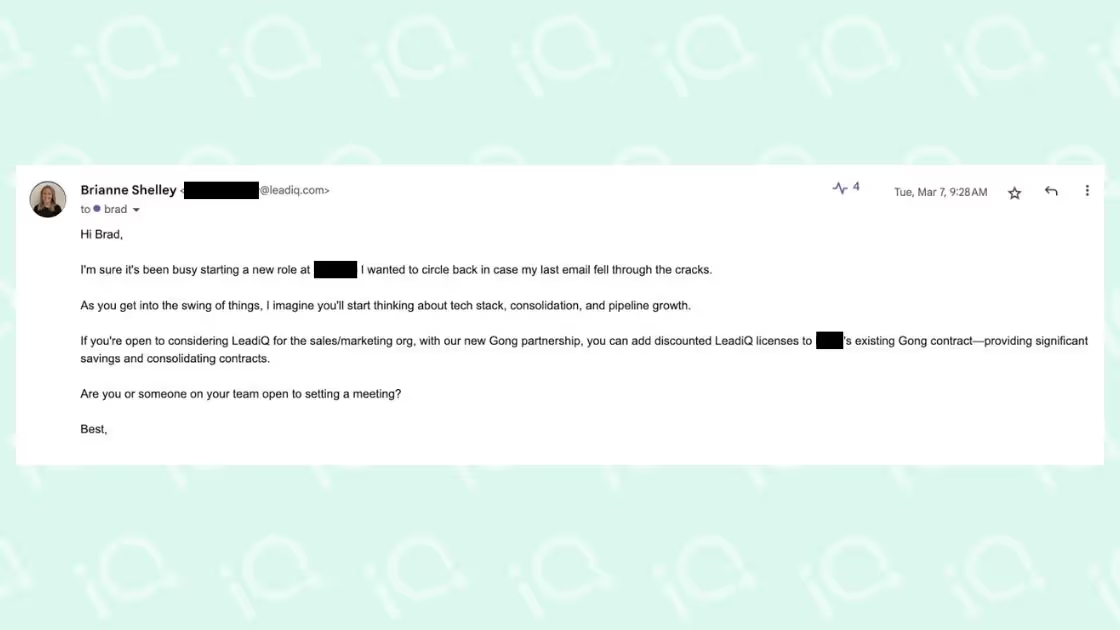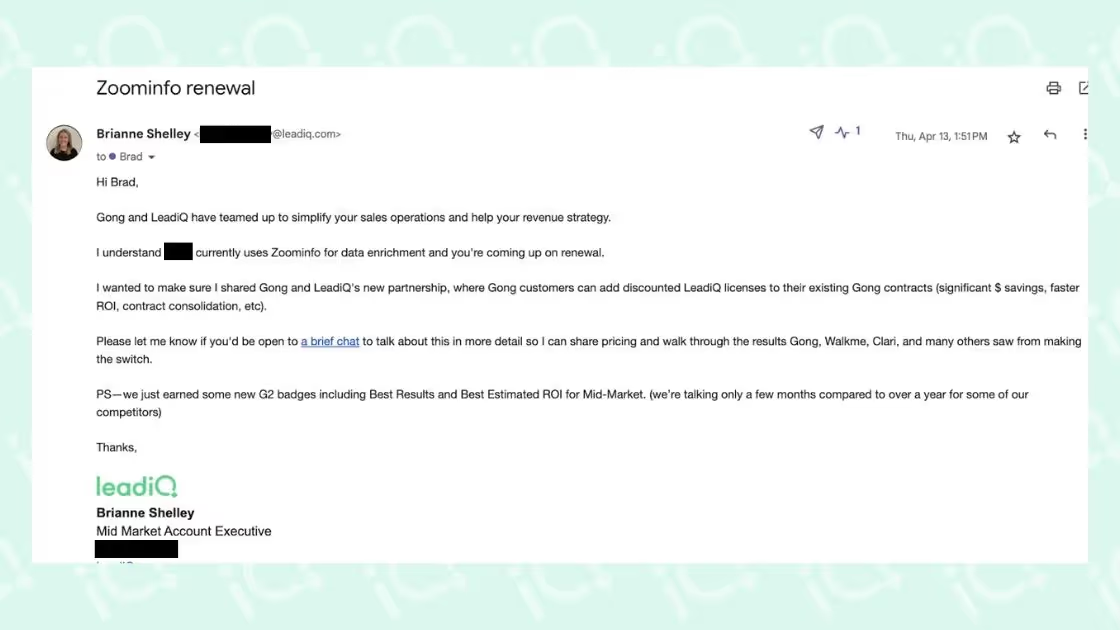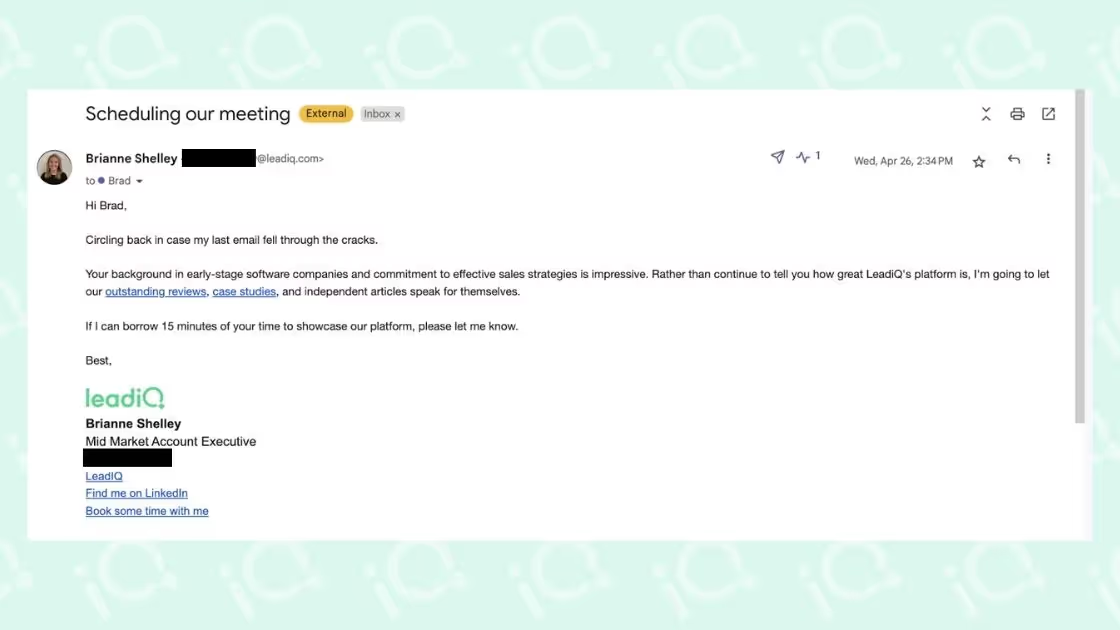Ready to create more pipeline?
Get a demo and discover why thousands of SDR and Sales teams trust LeadIQ to help them build pipeline confidently.





Get a demo and discover why thousands of SDR and Sales teams trust LeadIQ to help them build pipeline confidently.
Sooner or later, it’ll happen to you: A prospect you’ve been targeting changes jobs. Maybe they’re being promoted, maybe they’re moving to a completely new company, or maybe they’re one of the unlucky ones who’ve been laid off.
Whatever the scenario may be, a job change can disrupt your sales cycle and create uncertainty in your pipeline and revenue forecasts.
The good news? Through prosper account and contact tracking, a job change can also lead to new opportunities for sellers.
By leveraging the right account and contact tracking tools and receiving timely job change notifications automatically, sellers can anticipate and be aware of potential shakeups and adapt sales processes and strategies accordingly.
After all, job changes give sales teams the perfect opportunity to re-engage prospects, build new connections with past customers, and position their products and services before new organizations.
Recently, we’ve covered how sellers can use job change alerts and notifications to boost cold outreach; you can learn about that here. We also launched brand new contact tracking capabilities to help our customers keep track of job changes, so we’re sharing two real-life stories that illustrate how our own sales team was able to find new pipeline thanks to timely job change notifications.
Brianne Shelley is a Mid-Market Account Executive here at LeadIQ. Brie had been working on a deal with an account that ended up going dark after the initial evaluation. While she coordinated outreach with our SDR team, the opportunity had gone silent. Due to the prospect’s unresponsiveness, she believed the deal was lost.
In one regard, she was right: The initial opportunity was still silent. But not too long after that, Brie received a job change notification that her prospect had switched companies and was now a CRO.

Normally, Brie wouldn’t be reaching out to CROs as part of her prospecting strategy. But since she already had an existing relationship with the contact — and that person just changed jobs, ending up in the C-suite — the lead was really warm because it checked off a few boxes:
This simple automatic notification reignited the opportunity. Brie was immediately provided with the prospect’s contact details through LeadIQ’s track capability and instantly added them to a new sequence that started with a personalized email congratulating them on their new role. At the same time, she also tailored the message around a new LeadIQ partnership with Gong since she knew this new company was already one of Gong’s customers. (Yes, you too can take advantage of our Gong partnership to save on contact data! If you’re interested, check out our partnership page.)

While it did take a few more emails in the sequence to get a response, this is typical in a job change scenario. Just think of how busy you were onboarding and learning the ins and outs of a new company the last time you changed jobs! Patience and persistence are key, and ultimately the effort paid off.
Here’s a sample of the messaging used:




Let’s do it — music to a seller’s ears! 🎵 🎶 🎼
For Brie, that initial job change notification was the spark that reignited a deal that could have potentially gone completely dark.
Now that you know Brie’s story, let’s turn our attention to another Account Executive at LeadIQ who used our contact tracking capabilities to great effect.
Aquino Farmer is an Account Executive at LeadIQ. In this position, he spends a ton of time in Salesforce — just like most sellers. One day, Aquino opened Salesforce and went to a report that highlights job changes for the different personas and titles he tracks. Right away, he saw that someone who’d evaluated LeadIQ in the past — but stopped the process when they got sick — had changed jobs.
After looking at his notes, Aquino figured the prospect was probably still interested in LeadIQ. The prospecting process was going smoothly up until the point the person got sick and the account went dark. Since LeadIQ automatically links the contact’s prior account with the new one — and updates their title, email, and phone number automatically — Aquino decided to reach out to the prospect, writing a high-level, personalized note congratulating them on their new job… That message also referenced the fact that the prospect evaluated LeadIQ in the past and that the evaluation was cut short. Might the prospect be interested in checking out LeadIQ again?
Aquino quickly received a response: Your timing is right on point.
Next thing he knew, Aquino had scheduled a discovery call to qualify the lead; the opportunity was entirely rooted in that single job change notification. At the time of writing, Aquino was helping the prospect move through a proof of concept, and the new company became a pipeline opportunity for the next quarter.
Without the report focused on contact tracking and job changes, Aquino would have had to comb through Salesforce reports by hand, analyze multiple accounts, and poke around in Outreach — all while crossing his fingers and hoping for the best. Without contact tracking, he estimates it would have taken weeks or even months to find the job change information that this report surfaced automatically.
Like most AEs, Aquino starts a lot of his outreach with cold emails. When a prospect doesn’t know who you are and what you have to sell, it takes a lot of time to get someone to even consider the service in the first place, let alone sit through a demo. By relying on automated contact tracking, Aquino can spend his time more effectively targeting a warmer leads who already have an understanding of the product he’s selling. In his opinion, this job change notification sped up the sales cycle at least two or three weeks — and maybe longer — because the lead was already knowledgeable about the platform.
Add it all up, and a deal that might close next quarter can close this quarter with a contact tracking solution powering your sales team’s prospecting efforts.
To learn more about how to use contact tracking to transform job changes into pipeline with minimal effort on your end — and to hear Aquino’s story in his own words — check out this recent webinar.